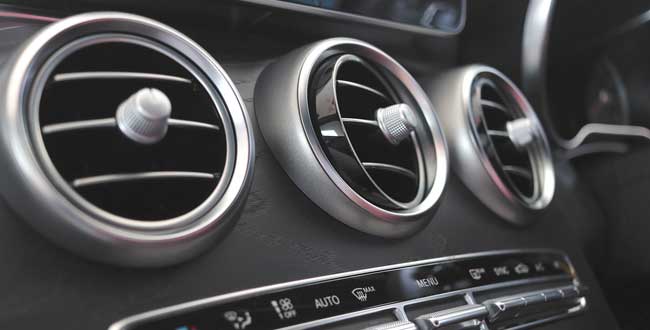The two biggest concerns that drivers have when considering an electric vehicle is how they will charge it and the mileage range.
We recently took an in-depth look at charging in our electric vehicle charging guide so today we’re going to have a look at the mileage range.
All electric and hybrid vehicles that have a fully electric mode will be advertised with a mileage range. This range is achievable for the vehicle as based on the testing looked at below but there are a number of other factors that can impact this when driving the car in your day to day life.
Testing the Range of an Electric Vehicle
Electric vehicles will be tested through Worldwide harmonized Light-duty vehicles Test Procedure (WLTP) which came into effect last year as the standard test for all new vehicles.
WLTP tests replace the previous NEDC ones and are designed to be a universal measurement across car brands around the world. Unlike previous measurements, they are not only tested in laboratories but also in real-world conditions with the aim of being a more realistic measurement.
This means the vehicle is tested in a number of driving situations, including urban, rural and motorway scenarios as well as in realistic weather conditions with a wider range of temperatures. For fully electric vehicles this also means testing them at higher speeds as they have a higher energy consumption with higher speeds.
When looking at an EV and whether the mileage range is suitable for you it’s important to note that though the WLTP testing is a more realistic reflection of the range it doesn’t take into account all of the factors we’ll look at below.
What Affects the Range of an Electric Vehicle?
There are a number of factors that can impact the real-world range of your electric vehicle and the electric range of your hybrid, including:
- Your driving style
- Terrain and road typography
- The weather
- The weight of the vehicle
- Using the heating and air conditioning
- Condition of the tyres
- Condition of the battery
We’re going to look at each of these in detail and where possible how you can minimise the impact of them on your vehicle.
Your Driving Style
How you drive is one of the biggest factors that influences the range of your EV.
The heavier you are on the accelerator and the faster you go the more power that you will need and so the quicker your battery will be depleted.
Softer acceleration and lower speeds use less energy and so you will find that your range will be further if you try to accelerate more gently and reduce your average speed.
What speeds up must slow down, and so how you brake will also have an impact on the range of your EV.
If you are able to allow the vehicle to decelerate using the regenerative brakes this will help capture energy that is usually lost during braking. However, if you brake late then you are going to use up far more energy which will reduce the overall range.
Terrain and Typography
Where you are driving can have an impact on the range of your EV as well.
Even a slight incline requires more energy to drive than a flat road, which is why hill driving can have an impact on your range.
Most electric vehicles will recapture some energy when driving downhill through regenerative braking, though this may not be the same amount of energy as used when going up the hill.

There is no way to avoid driving over hills, and there is little that you can do to negate the impact that this will have on your vehicle’s range, but it is something you should be aware of, especially if you live in a particularly hilly area.
Weather
Even in a vehicle with a traditional combustion engine you will see the weather has a large impact on the life of a battery.
All vehicles are less efficient during the cold weather of winter, as batteries perform best in heat because the cold inhibits the flow of electrons in the battery and to the rest of the vehicle. This is why it is more common for your car not to start or to have a dead battery in the winter than at any other time of the year.
Usually, electric vehicles are far more efficient than petrol or diesel, however a lot of the energy in a traditional engine is converted into heat, which means you won’t need to use as much of its battery power on heating. Whereas, with an electric vehicle you will need to dedicate battery power towards heating the vehicle, clearing the windscreen.
An electric car may also have a heating/cooling system to keep the battery at the optimum temperature, as the cold weather reduces the flow of electrons.
Not only does the cold weather reduce the range of an EV but the additional power you will need to use to heat will further reduce it as well, so in winter months you might find that you cannot travel as far as in the warmer weather.
The wind can also have an impact on the range of your vehicle, if you are driving into a headwind then the car will need to use more power to reach the same speeds, which is why if you are driving into the wind for a long period of time you might find the range reduce a little.
Though there’s little that you can do about the weather we think it’s important to mention as you’ll need to factor in the cold weather and its impact on the range when using an EV during the winter.
Vehicle Weight
The heavier your car is the more energy it will use to move. So, if you have a car full of passengers or a heavy load in the boot then your range will be slightly smaller.
This usually doesn’t have too large of an impact on the range, unless you have a particularly heavy load, but might be noticeable if your driving style includes frequent acceleration and heavy braking as mentioned above.
Where possible we recommend avoiding leaving heavy loads in your vehicle for long or repeated journeys. However, if you are making a trip and have the car loaded up with passengers and their luggage then we advise to keep in mind your range for that journey will be smaller so you will need to stop to recharge earlier than you normally would.

Use of Heating and Air Conditioning
One of the indirect effects of weather on the range of your vehicle is that you will need to use the heating in the cold and air conditioning in the warm weather. Using these will not have a large impact on the range of your vehicle but you might notice a reduction of a few miles.
Using the radio, lights and windscreen wipers will not have a noticeable effect on the mileage range.
We recommend still using these features as you would with a traditional combustion engine but to be aware when looking at which model is right for you that realistically you’re likely to lose a few miles from the available mileage range because of them.
Tyre Condition
Electric vehicles do not have as much wear and tear as traditional engines as they do not have the clutch or transmissions. However, one area where they do have the same level of wear and tear is on the tyres.
You should make sure your tyres are in a good and safe condition and the air pressure is within the manufacturer’s guidelines. The air pressure is particularly important for electric vehicles as low pressure might reduce your range.
Battery Condition
Just like with the battery in a car with a traditional combustion engine as it ages and goes through numerous charge cycles then the energy storage available decreases. From testing on older models with a number of miles on the clock though this only appears to have a minimum impact, and with advances in batteries is likely to reduce as new technology appears.
What Range Can You Really Expect to Achieve?
The range advertised on a vehicle is achievable though only if you’re very careful with your driving style, passenger and load weight, vehicle condition and the other factors mentioned above.
With this in mind, we think it’s more realistic to expect to achieve around 80 to 90% of the advertised range without having to really restrict yourself with passengers, driving habits and roads used.
We’ve also been advised by one of our Mercedes dealers that once the car becomes accustomed to your driving style and the type of journeys you complete the range will increase.
If you want to find out more about electric vehicles then take a look at this electric car leasing guide or check out our current top electric and hybrid leasing deals.
If you’d rather speak to someone then give us a call on 0330 221 0000.









Leave a Comment